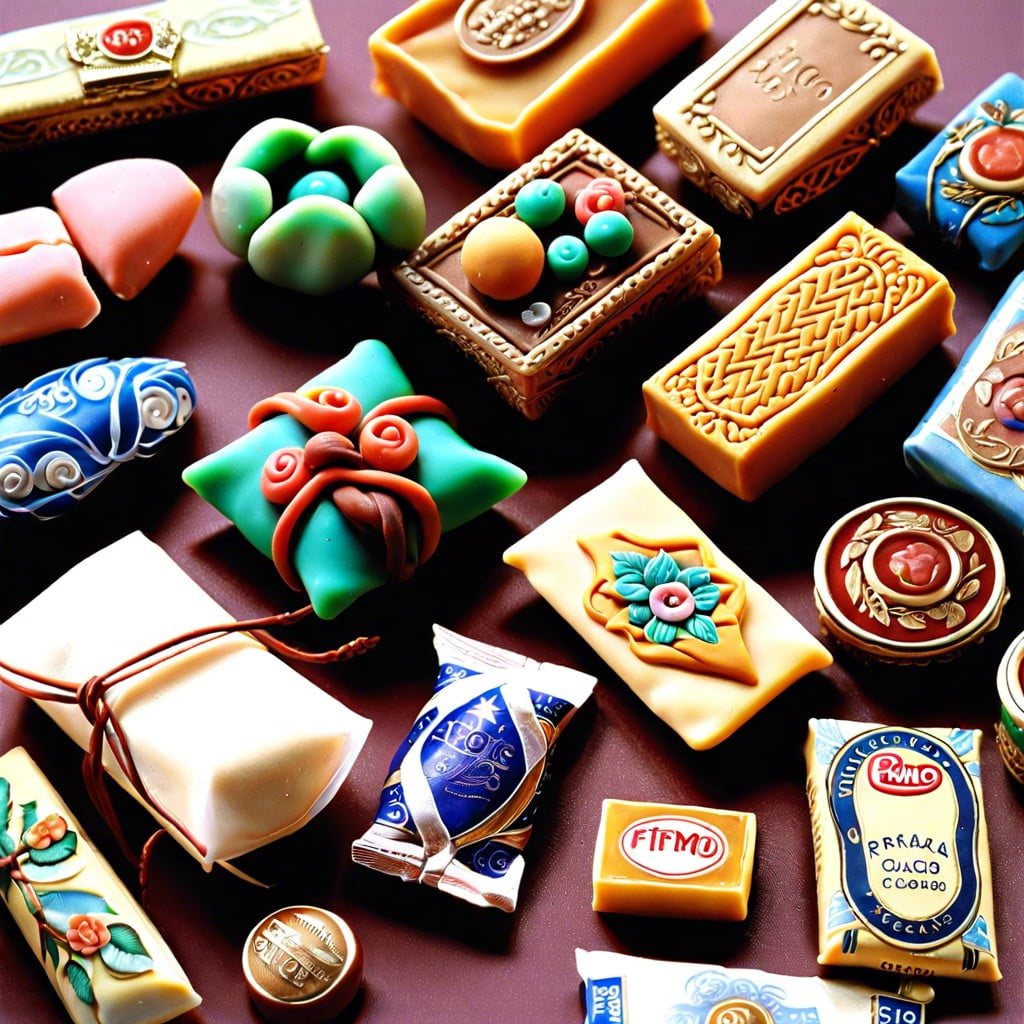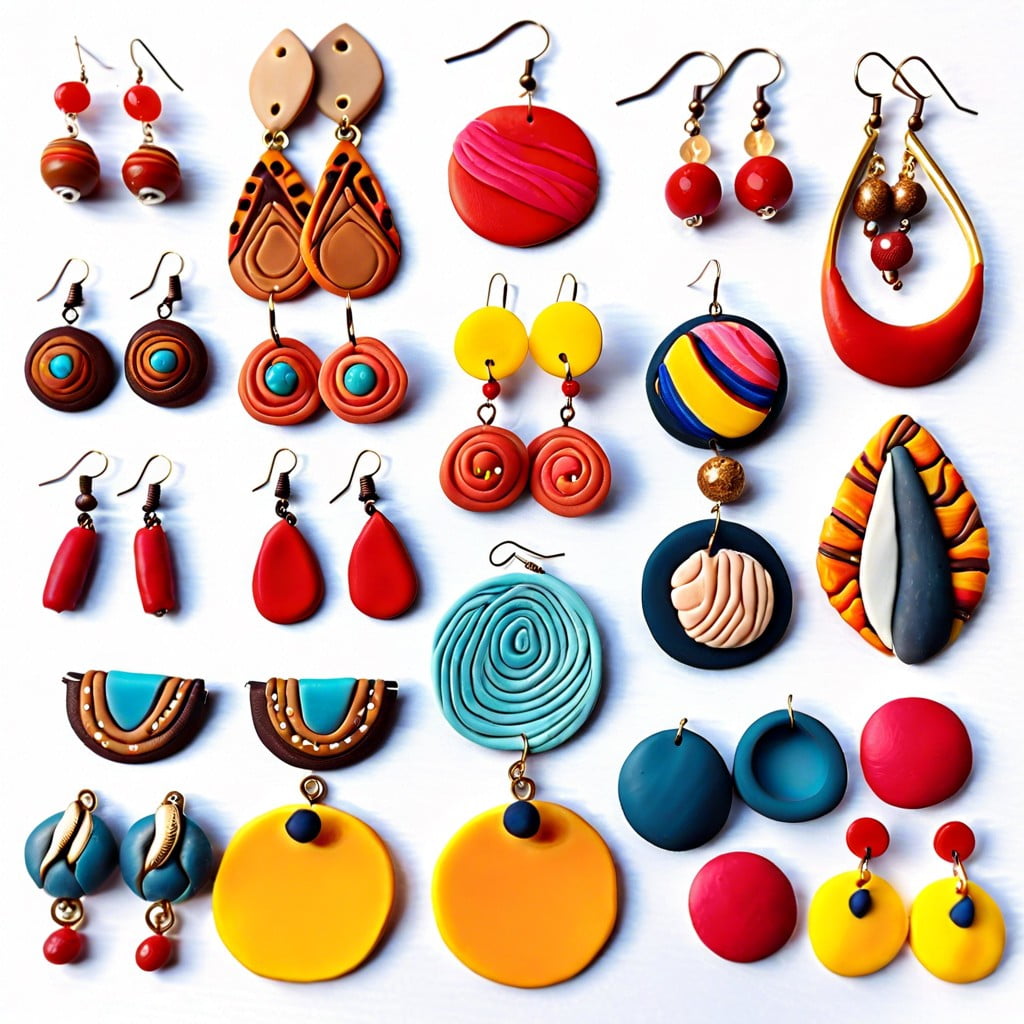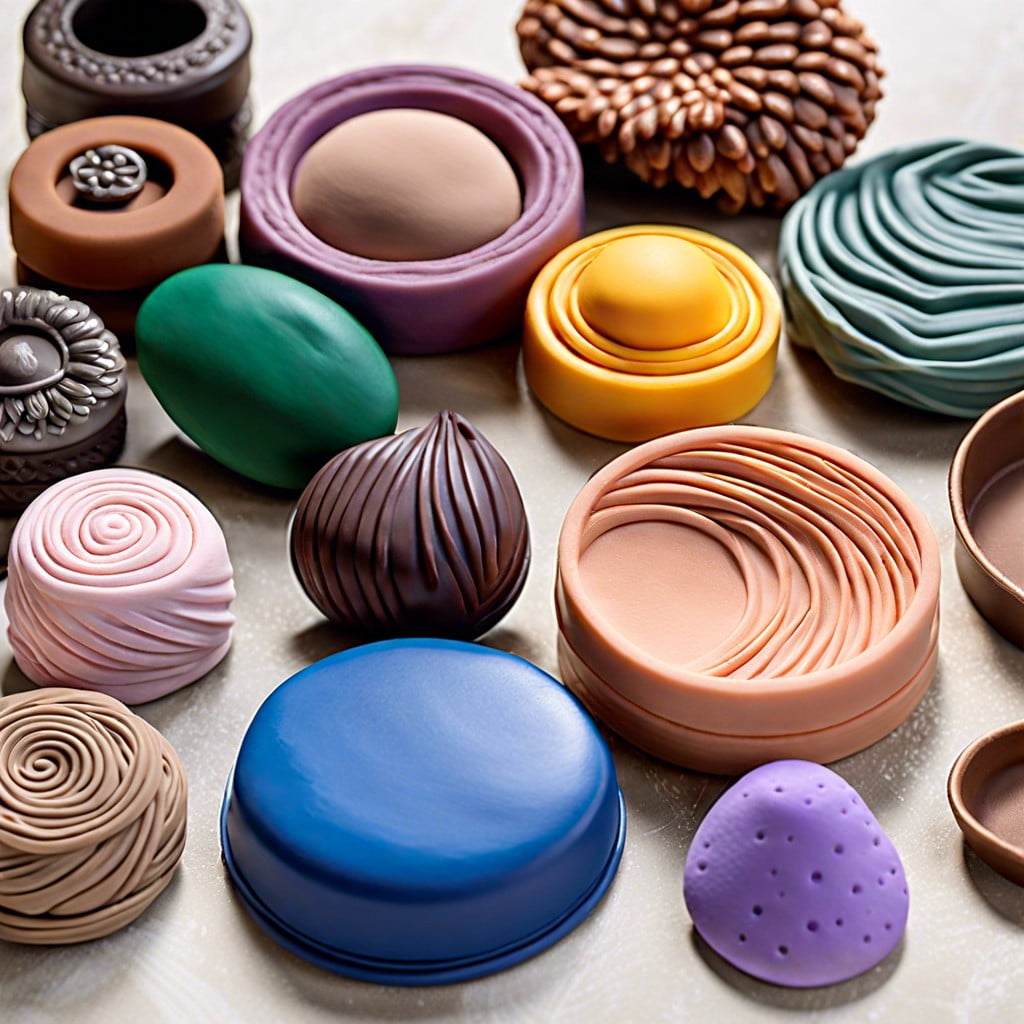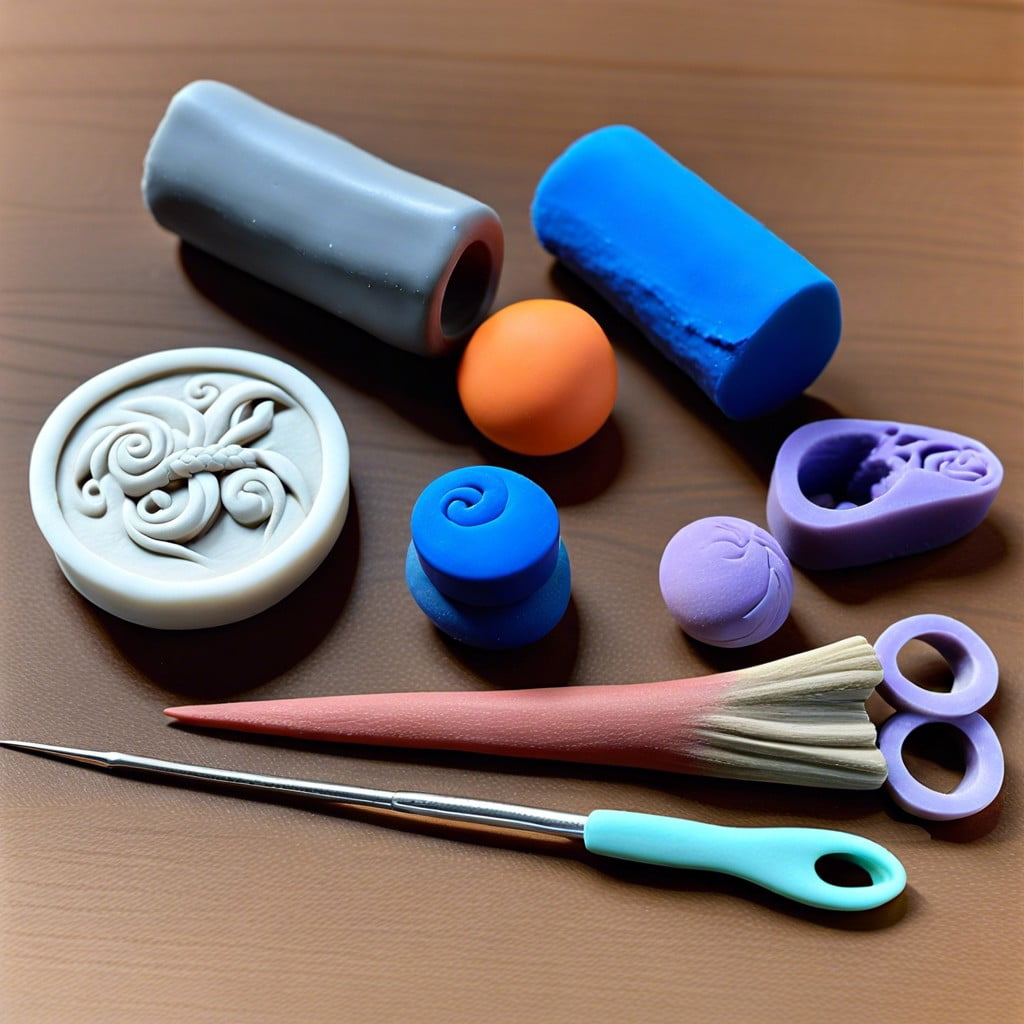Explore the top clay brands in the market because their unique features can greatly impact your construction project’s success.
Key takeaways:
- Sculpey offers a range of polymer clay types for different uses.
- FIMO clay is known for its firm texture and vibrant colors.
- Kato Polyclay is preferred by artists for its durability and versatility.
- Pardo Polymer Clay is eco-friendly and transparent, ideal for delicate pieces.
- Cernit Polymer Clay has a porcelain-like finish, great for realistic details.
What You Will Learn
Sculpey As a Brand Name, Not a Type of Clay
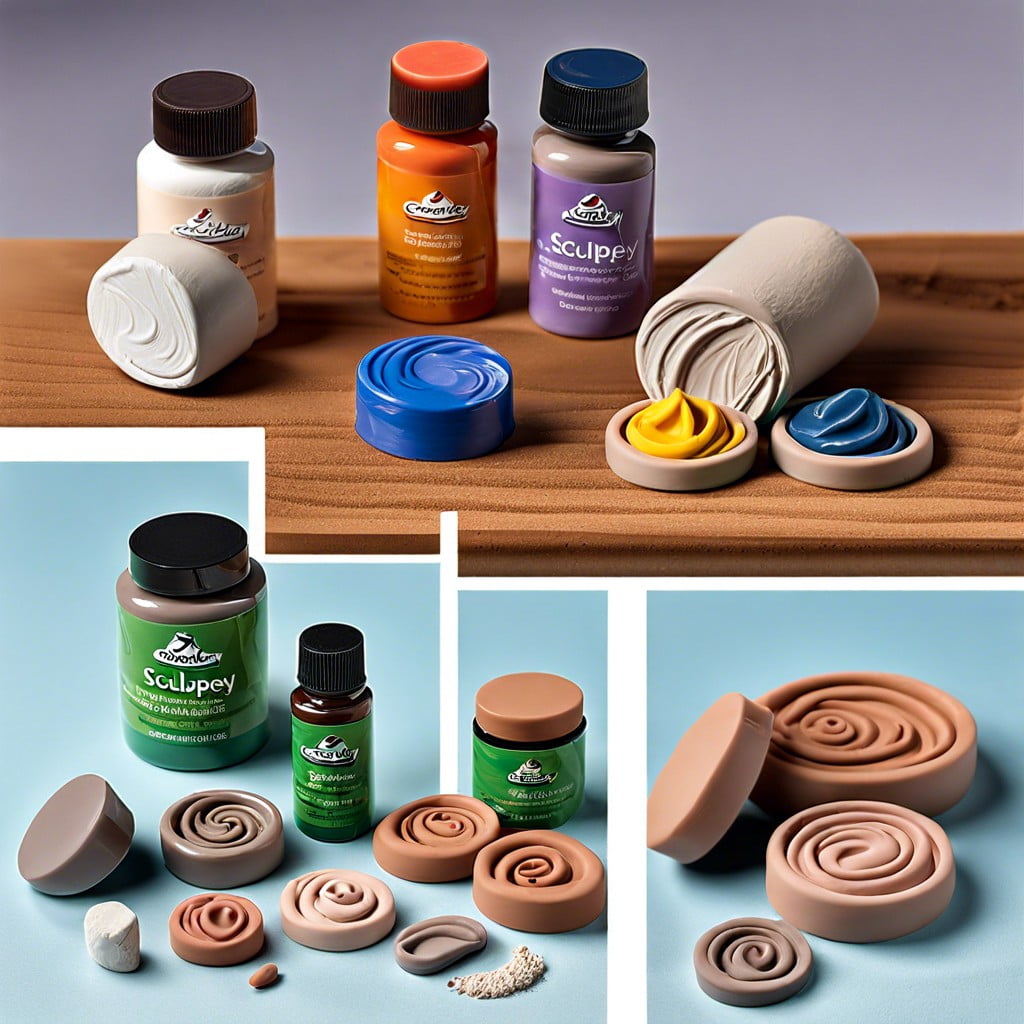
Sculpey is often mentioned colloquially to refer to polymer clay, but in fact, it’s a trademarked brand that offers a wide range of polymer clay products. Each type of Sculpey clay has unique properties tailored for different uses:
- Sculpey III: Known for its softness and ease of use, making it a favorite for beginners.
- Premo Sculpey: Offers high strength and flexibility, preferred by professional artists for detailed work.
- Super Sculpey: Utilized for sculpting, particularly in animation studios, due to its fine-detailing capabilities and flesh-like color.
- Sculpey Soufflé: Features a lightweight composition and suede finish, ideal for jewelry making.
It’s crucial to note that not all polymer clays are Sculpey, much like not all tissues are Kleenex. When purchasing, be sure to match the Sculpey variety to the specific needs of your project for optimal results.
Overview of Sculpey Products
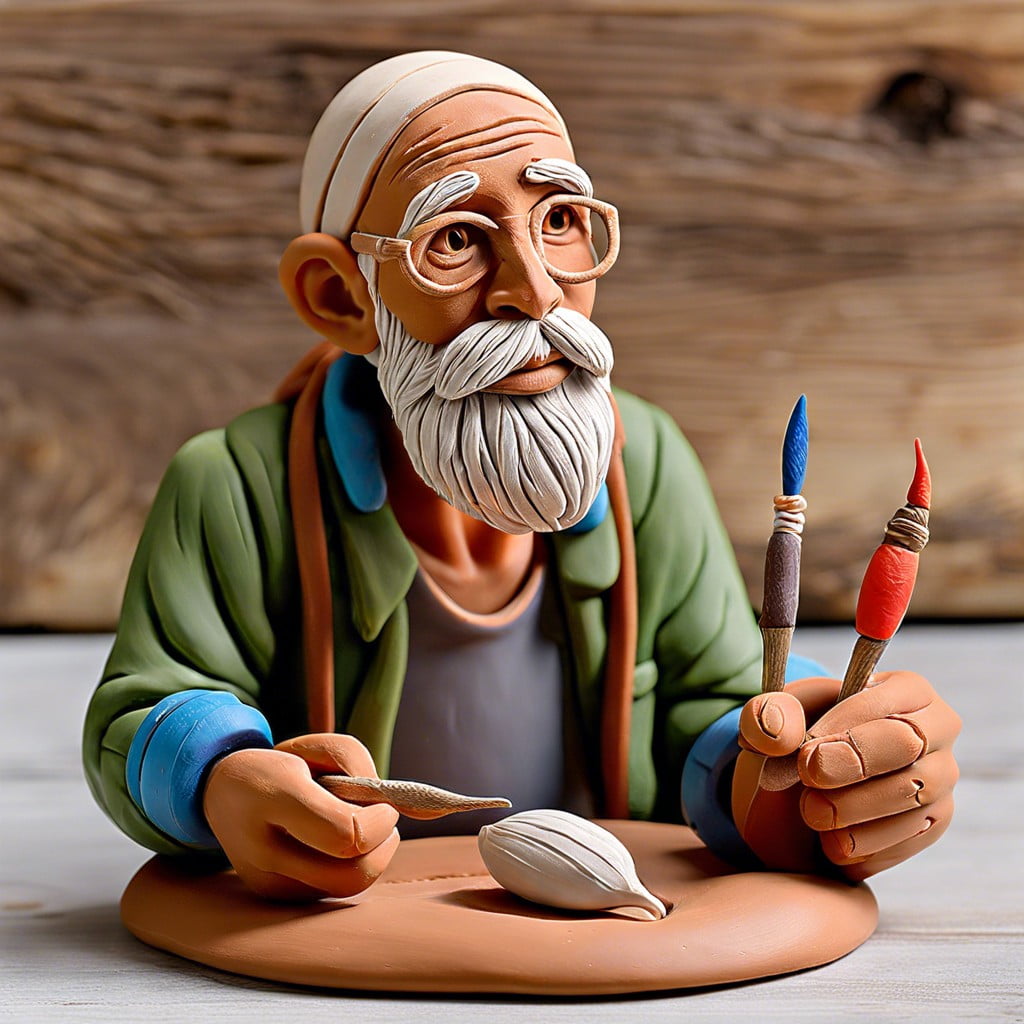
Sculpey offers a diverse range of polymer clays, each with distinct properties suited for various skill levels and project types. Original Sculpey is soft and pliable, making it a favorite among beginners for its ease of conditioning. Sculpey III, on the other hand, is available in a vibrant color palette and is perfect for crafting small figurines or jewelry. Its more rigid counterpart, Super Sculpey, is chosen for professional-grade sculpting due to its firmness and excellent detailing capabilities.
For those looking to replicate the look and feel of ceramic, Sculpey’s Premo! Sculpey has a finish akin to stone once baked. With a balance of strength and malleability, it’s ideal for advanced techniques like millefiori. Sculpey Soufflé, with its lightweight and suede-like finish, offers unique qualities favored for creating jewelry pieces that are comfortable to wear.
Lastly, for artists requiring a clay that can endure more wear and tear, Sculpey has developed Sculpey Bake Shop and Liquid Sculpey. These varieties can be used for both general crafting and specialized applications such as adding fine details or creating a translucent effect. Each Sculpey product has been tailored to provide artists the versatility needed for their creative endeavors.
Understanding FIMO Clay
FIMO clay, developed by Eberhard Faber, is renowned for its firm texture and vibrant colors, making it a favorite for detailed work. There are distinct lines within FIMO, each tailored for specific needs:
- FIMO Professional: The choice for precise work, it has a firm consistency and comes in a wide spectrum of pure colors, which is ideal for artists who like to mix their own shades.
- FIMO Soft: As the name suggests, this line is softer and easier to manipulate, excellent for beginners or those with less hand strength.
- FIMO Effect: This line offers special effects like metallic, glow-in-the-dark, and translucent, adding unique touches to creations.
- FIMO Leather: A newer addition that simulates the look and feel of leather, this clay is flexible and durable, suitable for creating jewelry and accessories.
All FIMO clays can be cured in a standard oven, and once hardened, they can be carved, sanded, and even polished for a professional finish.
Kato Polyclay
Kato Polyclay sets itself apart with its firm consistency, which makes it preferred among artists and professionals who require a durable and robust finish.
It has a slightly different curing process, with temperatures ranging usually from 275 to 325 degrees Fahrenheit, which is key to achieving its notable strength and stability.
Its versatility allows for detailed sculpting and can be advantageous for techniques like caning – a method where the clay is layered, then rolled, sliced, and shaped to create intricate patterns.
Offered in a variety of colors that are known for their vibrancy, it can also be found in a clear translucent variant that allows for the creation of faux glass or gem effects.
Kato Polyclay’s formulation resists color shift from curing, ensuring the final product remains true to the original design.
It reacts well to various finishing techniques, whether it’s being sanded, buffed, or carved post-baking, allowing for a high level of refinement in finished pieces.
Moreover, its leach-resistant and non-sticky nature appeals to those who work on projects over longer periods.
As a result, Kato Polyclay is esteemed for its dependable performance and high-quality finish in the polymer clay community.
Pardo Polymer Clay
Pardo Polymer Clay distinguishes itself through its beeswax-based composition, offering an eco-friendlier option. This clay is known for its exceptional transparency, perfect for crafting delicate pieces like faux gemstones or intricate jewelry.
Its malleability allows for easy conditioning, which enthusiasts and professionals appreciate for saving time and effort. Pardo’s color range, including the ‘Art Clay’ lines, is rich and can be mixed to create custom hues.
Additionally, this clay can be baked at a lower temperature compared to other brands, reducing energy usage and the risk of burning projects. With its unique features, Pardo Polymer Clay holds a respected place in the clay community, often preferred for its quality and finish.
Cernit Polymer Clay
Cernit is recognized for its porcelain-like finish, which contributes to its popularity among doll makers and jewelers. This Belgian-made polymer clay has a remarkable translucency after baking, making it excellent for certain techniques, like creating realistic gemstones or delicate flower petals.
It comes in a range of color lines, including Number One, Nature, Glamour, Translucent, Neon, Nightglow, and Metallic. Cernit clay can be a bit firmer compared to other brands, but it conditions well, lending itself to fine detail work and maintaining its shape nicely during the sculpting process.
It bakes at a similar temperature to other polymer clays, generally around 110-130°C (230-265°F), but always verify the package instructions for precise temperatures and baking times to achieve the best results.
Specialty and Niche Clays
Beyond the well-known polymer clay brands, the market offers an array of specialty and niche clays tailored to specific artistic needs. These clays often have unique properties that can enhance the creative process:
- Translucent Clays: Designed to mimic glass or semi-precious stones, these clays offer a see-through quality that can add depth and realism to your creations.
- Glow-in-the-Dark Clays: Incorporating phosphorescent materials, these clays can absorb light and glow in the dark, perfect for adding a surprise element to crafts and jewelry.
- Liquid Polyclays: Available in various viscosities, these liquid clays can be used as adhesives, in grouting for mosaics, or even as a translucent medium for painting-like effects.
- Colored Porcelain Clays: A new addition to the clay family, they offer the refined finish of porcelain with the ease and versatility of polymer clay.
- Cosclay: A type of flexible polymer clay that retains a rubbery flexibility after curing, ideal for sculptures and figurines requiring some movement.
- Metal Clays: These clays contain powdered metals and can be fired to create solid metal pieces, popular among jewelry makers for their authentic metallic finish.
Exploring these specialized options can open up new possibilities and allow for experimentation in texture, appearance, and functionality. Whether you require a clay that will bend, glow, or shine like metal, there’s likely a niche product to meet your project’s needs.
Craft Store Brands
Many craft stores offer their own branded polymer clays, which can be a budget-friendly option for casual crafters. These brands sometimes lack the extensive color ranges and specialty options of premium brands but can be suitable for basic projects and practice:
- Accessibility is a key advantage; these clays are readily available locally.
- Cost-effectiveness makes these brands a go-to choice for bulk purchases or beginners.
- They often have a softer consistency, which can be easier for newcomers to mold but may present challenges for detailed sculpting.
- Durability varies, so consider the intended use—decorative pieces may fare well, but functional items may require a sturdier brand.
- Compatibility with other clays should be tested, especially for complex projects involving multiple brands.
When starting with these clays, it’s beneficial to experiment with small projects to gauge their performance before committing to larger works.
International Brands
Polymer clay enthusiasts around the globe may encounter brands that cater to regional markets. For instance, Japan offers Padico, known for its soft texture and suitability for delicate work. Europe has FIMO, one of the pioneers in polymer clay, beloved for its firmness and vivid colors, which makes it excellent for detailed canework. In Russia, there’s the brand PVClay, which is gaining popularity for its strength and resilience. Australia’s Mont Marte provides a versatile option that’s often used for both hobbyist and professional projects.
Each of these international brands offers unique formulations that can influence the outcome of your project. Factors such as the malleability, curing temperature, and finish (matte or glossy) can vary from one brand to another. Thus, it’s worth exploring options outside of your local market. With online shopping, accessing these various clays has become easier. Remember to check the compatibility with other clays and the specific baking instructions to ensure the best results in your creations.
Identifying Generic Polymer Clays
When encountering unbranded or lesser-known brands of polymer clay, it’s essential to assess a few key qualities to ensure they meet your project needs. Here are the points to consider:
- Packaging and Presentation: Generic clays may have minimal packaging with limited information. Look for any details that might suggest the clay’s quality or characteristics.
- Texture and Conditioning: Often, the feel of the clay gives away its quality. It should condition to a pliable state without too much effort. Stiff or crumbly clays may be challenging to work with and could indicate an inferior product.
- Color Range: Assess the variety of colors available. A limited palette could restrict your creative possibilities.
- Baking Requirements: Check any baking instructions provided. Generic clays may require different temperatures and times compared to established brands.
- Price: While cheaper options are tempting, they might compromise on quality. Balance cost with the potential for good results.
- Reviews and Recommendations: Research what other crafters say about the clay. Community forums and online reviews can provide insight into the clay’s performance.
These considerations will help you navigate the options and select a generic clay that won’t disappoint you in your creative endeavors.
Choosing the Best Polymer Clay Brand
Selecting the right polymer clay brand hinges on several factors tailored to your project needs:
- Intended Use: Delicate jewelry pieces might benefit from a stronger brand like Kato Polyclay, while intricate sculpting could be better served by the malleability of Sculpey Premo.
Finish: Some clays, such as FIMO, offer a high-gloss finish without glaze, whereas others require sealing to achieve a similar shine.
Color Range: Artists looking for vibrancy and variety should consider brands like Sculpey or FIMO, as they offer extensive color palettes.
Durability: For items needing toughness, like keychains or handles, a robust clay like Kato Polyclay is advisable.
Curing Temperatures and Times: Balance your workspace capabilities with the clay’s curing requirements to avoid burnt or undercured pieces.
Mixability: If custom color blending is essential, choose brands with clays that mix well, like Sculpey or Cernit.
Budget: Weigh your financial constraints against the quality and quantity of clay; more economical brands might suffice for practice or large volumes.
Allergies or Sensitivities: Certain clays have specific additives; read the labels if you have sensitivities to chemicals or fragrances.
Remember, it’s not just about the brand, but how its properties align with your creative ambitions. Experimentation can also be key — small blocks of different brands allow you to test before committing to larger quantities.
Where to Buy Polymer Clay
Polymer clay is widely accessible both online and in brick-and-mortar stores. Craft enthusiasts will find it in dedicated craft stores, art supply shops, and even large retail chains with an arts and crafts section.
Online marketplaces such as Amazon and eBay often carry a vast range of clay brands, colors, and package sizes. For those seeking specific types or brands, specialist online retailers and the official websites of clay manufacturers are the go-to sources.
If you’re considering a new project, check local stores for immediate needs, or turn to online suppliers for a broader selection and bulk purchasing options. Additionally, engaging with the polymer clay community through forums and social media groups can lead to tips on the best places to shop for deals and unique products.
Compatibility of Different Clay Brands
Mixing different brands of polymer clay can yield creative results and unique properties, but it’s essential to note that not all clays are perfectly compatible. Some clays may have differing baking temperatures or formulations that react negatively when combined. To ensure the best outcome when mixing clays:
- Perform a small test blend: Before committing to a large project, make a sample mix to check for any issues during curing or in the final strength and durability of the blend.
- Check baking temperatures: If brands have similar baking temperatures, they’re more likely to be compatible. Adjust the curing process to accommodate the clay with the lowest temperature requirement.
- Consider formulation differences: Clays that are too diverse in their composition may not bind well together, leading to potential cracking or separation.
- Observe post-baking flexibility: Some clays retain flexibility after baking, while others become brittle. Combining these can affect the structural integrity of your creation.
- Monitor color changes: Different pigments may interact under heat, potentially leading to color shifts in your finished piece.
By keeping these points in mind, you can explore the creative possibilities of polymer clay without sacrificing the quality of your work.
Characteristics of Polymer Clays
Polymer clays exhibit a range of properties that cater to different crafting needs:
1. Malleability: Before curing, some clays are softer and more pliable, making them ideal for beginners, while others require more conditioning to soften, suited for detailed work.
2. Strength: After baking, clays vary in their strength and flexibility, with some brands better for thin pieces that need to bend without breaking.
3. Color Range: They come in an extensive color palette, including effects like translucents, metallics, and glow-in-the-dark.
4. Curing Temperatures and Times: Each clay has specific baking instructions to properly cure without burning or remaining brittle.
5. Finish: The finished look can be matte, satin, or glossy, and it sometimes can be altered with varnishes or buffing.
6. Mixability: Most polymer clays can be mixed to create custom colors or to blend the properties of different brands.
7. Shrinkage: Clays typically exhibit minimal shrinkage, but it can vary slightly between brands, important for precision work.
Understanding these characteristics helps in selecting the right material for a project’s requirements.
Utilization of Polymer Clay in Projects
Polymer clay’s versatility allows for a range of applications in construction projects. It can be shaped and molded before curing, making it suitable for detailed designs and prototypes. Its durability post-curing makes it an excellent choice for small architectural models or decorative elements.
The material can be colored, sanded, and even drilled, offering customization for aesthetic purposes or functionality. Additionally, polymer clay adheres well to various surfaces, including metals and wood, which can be advantageous in mixed-material projects. With proper storage, unused clay remains workable for future use, ensuring minimal waste.
Keep in mind that for structural applications, polymer clay is not a substitute for true construction materials but rather an aide in the design and planning phases or as a part of non-load-bearing decorative features.
FAQ
What are good polymer clay brands?
The highly recommended brands of polymer clay for both all-purpose uses and mixed color applications include Cernit, Premo, Pardo, Fimo Professional, Kato, and Cernit Opaline.
What clay is strongest?
The strongest clay available is Kato Polyclay, due to its ability to create permanent works of art that resist breaking and wear over extended periods.
What clay do artists use?
Artists often use polymer clay for small, bakeable sculptures and water-based clay for both loose and intricate detailed works.
Is Fimo or Sculpey better?
While Fimo, a brand of polymer clay, is stronger than Sculpey, the softer and easier modelling properties of Sculpey make it superior for details and handling.
How does the baking process affect the durability of polymer clay?
The baking process directly affects the durability of polymer clay by hardening it and making it more resilient to breakage and environmental damage.
What are the environmental impacts of using polymer clay in construction?
The use of polymer clay in construction contributes to environmental challenges due to its non-biodegradability, production emissions, and potential release of harmful substances when improperly disposed of.
Can the color of polymer clay influence its structural properties?
No, the color of polymer clay does not influence its structural properties.
Related reading:
